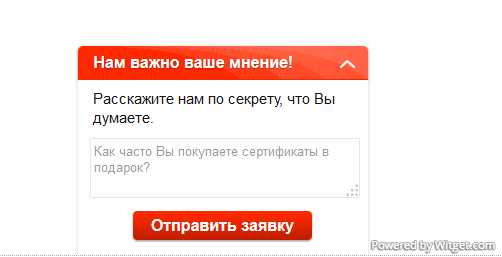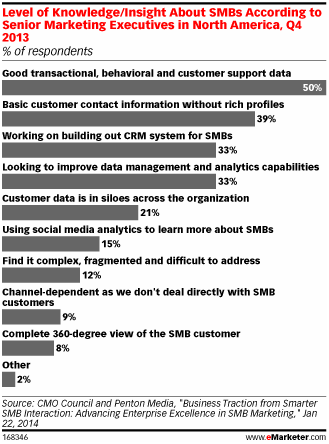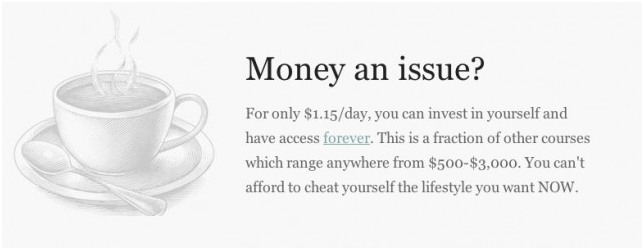How to create a user survey that improves conversion?
 Every day hundreds of visitors come to your site, and maybe thousands of visitors. This undoubtedly pleases and speaks about the popularity of your project. But will these people buy? Are they your target audience? Or did they just go out of curiosity?
Every day hundreds of visitors come to your site, and maybe thousands of visitors. This undoubtedly pleases and speaks about the popularity of your project. But will these people buy? Are they your target audience? Or did they just go out of curiosity?If you are not able to separate your target audience from the entire array of Internet users, the chance for success in business is extremely small. That is why it is necessary to constantly study your audience: its interests, behavior, preferences, income level. How to do it? Using surveys. About them will be discussed in our article.
Qualitative surveys, quantitative data ... What is the difference?
')

Before we go further, let's make sure that we speak the same language.
Quantitative data associated with numbers and measurements. As a rule, in the case of conversion optimization, we deal with such information - we are talking about conversion rate, A / B testing of results, building heat maps, etc. - All these data suggest specific figures and facts.

As for the qualitative data, they represent the characteristics of an object, and not specific numbers. This complicates the analysis, because first of all, you need to understand the data, interpret and analyze them.
An example of a qualitative survey implemented using the feedback form of the Witget service .

Both types of data are very important, but the benefits are different.
As a rule, thanks to quantitative data (figures), we learn that something is going wrong, and working with qualitative information, we find the answer to the question of the reason for this error. Next, we focus mainly on qualitative data, namely, how to get them through surveys.
Think polls really work?
Suppose you are launching a really good quality product — at least, so said the users who tried it. You are doing a large-scale targeted email-mailing for 30,000 people, but that's a failure, of which only 30 users are registered!
You offer to pass a survey to those users who clicked on the link but did not purchase your product or did not use the service. This is exactly what Noah Kagan did when he launched the project “How to earn 1000 dollars a month from scratch?”.

The questionnaire included only four simple questions :
- Have you been interested in buying? - WELL NO.
- Why?
- What keeps you from starting your business?
- Or did our support have to sing a song about hares, so you bought ?!
On the basis of the obtained data, an analysis was carried out, as a result of which the landing page was completely redesigned to match the preferences of customers and at the same time be useful, giving answers to the most pressing questions from users.
About how to use the result, we will talk later.
How to start quality surveys?
The purpose of any survey is to find out what you didn’t know before. Unfortunately, businessmen often conduct useless surveys that do not help in their future work and do not provide any relevant information.

With qualitative surveys, everything is different - you collect both negative and positive reviews, which can lead to real results in the near future.
For example, if you want to use high-quality feedback to optimize the recruitment process, ask your users to rate the “friendliness of staff” on a scale from 1 to 5. This will give you really useful information about the personal qualities of your employees - you can use the data to increase customer loyalty.
In addition, questions like “Did you like working with our employee?” Or “What are the merits of our staff?” Will help to identify the best performers, and also draw attention to the personality traits your company employee should have.
Another advantage is that you get a clear description of the users of your activity - this information can be used to adjust the value proposition or improve your product to make it better and more unique than the competition.
Whom to interview?
The answer to this question, first of all, depends on the results you want to get, and on the selected client segment.
If you want to improve sales, contact new customers (and users who have not yet made a purchase). If you are going to launch a loyalty program to retain customers, ask loyal customers. Well, if you plan to create a VIP-program for the most active customers, respectively, conduct a survey among those who buy from you more often.
Although the above is quite obvious, according to TheRelevancyGroup's 2010 survey, most marketers often pay attention to the client’s demographic and geographic data when conducting surveys.

And the point is not at all that this work is already four years old, but that segmentation has not yet been adjusted properly. A CMO Council & Penton Media study conducted in the 4th quarter of 2013 showed that only half of the survey companies achieved transactional and behavioral data of high quality.

Here are some ideas for grouping users:
- the most active buyers;
- regular customers;
- frequent customers;
- old customers;
- registered but not buying users;
- demographic separation;
- interests;
- grouping depending on the history of visits.
What to do with users who open the site, follow the link, but do not buy?

screenshot Monthly1k.com
Remember how Noah surveyed users who followed the link but did not purchase the product?
Using a qualitative survey, he realized that people do not buy, because:
Fear.
- Not sure if this model will work in their country.
- Not sure about the effectiveness of the program in your particular case.
- The user remembers the previous failures and is not sure that this time will be different.
Fear:

Determine whether the model will be effective for your country:

Personalization: Will it work for me?

Former failures: will it be different now?

And although Noah chose to keep silent about the jump in conversion and the increase in revenues that occurred due to the above-mentioned conversions, he boasted that "my whole product changed literally overnight."
The moral of this story is that we should not neglect the users who did not immediately make the purchase. By visiting the site and clicking on the link, they showed their interest, and you just have to find out why they decided to refrain from buying.
... and how many users need to poll?

Our goal is to get from 100 to 200 answers to the proposed questions, but if there are more than 200 respondents, we randomly select 200 results and analyze them.
It should be noted that if we take more than 200 answers, many of them will be repeated, and if less than 100, then some random negative comments can significantly affect the overall result, which is undesirable.
Again, if you have made a purchase of only 100 people, you should interview them. Even 20 users are more than nothing, but in this case one should be careful with the results of the analysis - they are not always accurate.
How to make your polls answered?
Based on our experience, the best way to encourage your customers to fill out a questionnaire is to offer them some kind of bonus - a gift card, a discount coupon, free delivery, etc.
Of course, the value of the gift should depend on the size of your company or the number of people you are going to interview - the bonus for providing information should somehow reflect the total profit from cooperation with the client segment from which you want to achieve a response.
In the example above, ThinkGeek offered Tommy to participate in a certificate draw for $ 500 in exchange for feedback.
Even if we reject the fact that $ 500 is a fairly large amount, Tommy still bought goods on this site for an amount of 4-5 times higher than last year. If ThinkGeek had used this quality data to recruit at least four such customers as Tommy, they would have earned $ 10,000 more per year.
But what if users pass a survey, only to receive a gift, and answer the truth?
Of course, there is always a risk, but in our experience, the information obtained a hundred times outweighs the potential risks. In addition, it is enough to notice when the "especially gifted" users deliberately distort the results.
Yes, there are always such clever men, but in reality there are not so many of them - out of 100 respondents, on average, only 5 people answer the survey just for the sake of a gift. And they do not even distort the results as much as they respond in a monosyllabic and short way. We simply exclude such users from the analysis.
Tips and tricks
Before sending a survey invitation letter, make sure the message is as simple and short as possible. Do not forget to indicate how long it will take to complete the questionnaire (as an alternative, use the number of questions - “only five short questions!”).
Determine the deadline (up to a week) and do not forget to send a reminder several times. Based on our experience, the majority (about 80%) of responses comes within 24 hours after sending the first letter.
The letter template that we use
We use a universal template to send an invitation letter to take a survey, which we customize for each client, based on their needs.
Here is what it looks like:
*** START LETTER ***
Hello friends!
We are doing everything in our power to provide you with high-quality service, and we need your help. Help to understand your expectations.
Please take only 5 minutes to complete this short questionnaire: link . Your answers will really help us a lot.
Please complete the survey in the next 2-3 days. Here is the link to follow: link .
We really appreciate your time, so each respondent will receive a useful gift: you can choose a $ 25 gift card at Amazon or Starbucks, a $ 25 donation to UnitedWay, or the next order for free shipping.
We will contact you after you send us the completed form.
Thank you very much!
*** END OF LETTER ***
You can use this template or trust your imagination. For more on how to create the perfect email for distribution, see the article “Increasing your online store sales: 5 steps to creating a perfect email distribution . ”
What questions can you ask?
Depending on what you want to know about your customers, types of questions are being developed.
To get all the necessary information and better know your target audience, pay attention to the following examples:
- Tell us about yourself! -> identify trends that your customers are targeting. B2B business representatives will be able to get information about the industry in which the user works.
- What product are you using? -> What kind of problem does it solve for the user?
- Do you simplify your life by using our product? -> The client himself speaks about the advantages of your product, and this is invaluable information for forming a value proposition.
- What made you sign up / buy our product? -> those features that you use + benefits.
- Do you know the alternatives of our product / purchase from us? If yes, please name them -> what is the competition? Ways to help you beat the competition.
- Did you doubt before making a purchase? In what? -> identification of sources of disagreements and their elimination (or correction, if they are related to usability).
- Was there something that almost stopped you from buying? -> again revealing difficulties.
- Do you have questions that you could not find the answer? -> 50% of purchases on the site does not occur due to lack of information. Such questions help to find out what information your customers are missing.
- What was the biggest difficulty when choosing the right product? -> It will help you to know the conversion path of the client.
- Would you like to ask us something? -> The user will leave feedback data so that you can answer any questions you may have.
Of course, you should not blindly copy these questions - if for the successful development of your business you need some specific information, do not be afraid to ask your customers about it. And do not forget to make sure that each of your questions has some purpose, and is not set just out of interest.
Source: https://habr.com/ru/post/238683/
All Articles